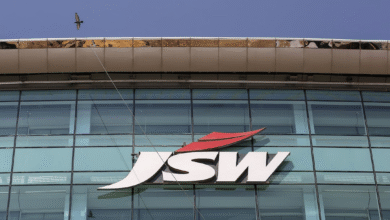Job Hugging: A Shift from Job Hopping in 2023

In today’s uncertain economic landscape, the phenomenon of “job hugging” has emerged as a notable trend among workers who are opting to stay in their current positions instead of exploring new opportunities. This shift is a response to various factors, including job market trends, where the once vibrant landscape of job hopping has slowed to a crawl amid the reported ‘great resignation’ now referred to as the ‘great stay.’ Many employees are clinging to their roles “for dear life” due to prevailing fears about job stability and the diminishing prospects for job growth. As companies tighten their hiring belts, concerns about employee retention have grown, suggesting that the industry’s recovery is fraught with caution. Understanding the implications of job hugging is crucial for both individuals contemplating a career shift and businesses strategizing for a more dynamic workforce.
The current workforce climate has given rise to alternative concepts such as “employment retention” and “career clinging,” where individuals choose to remain in their roles rather than seeking new positions. In light of slowing job market dynamics and ongoing uncertainties, many workers have adopted a mindset focused on job security over exploration. The once prevalent trend of swift job switching has morphed into a preference for stability, as employees favor their existing roles amidst fears of the unknown. As we delve deeper into this phenomenon, it becomes imperative to consider its effects on personal growth, wage potential, and overall career trajectories in an evolving job environment.
Understanding Job Hugging in the Current Labor Market
In recent times, the phenomenon of ‘job hugging’ has emerged as a significant trend reshaping worker behavior. Unlike the previously common practice of job hopping, in which employees frequently switched jobs in search of better opportunities, job hugging reflects a newfound cautiousness among workers. According to organizational consultants, this trend arises from uncertainty in the job market, partly due to factors such as economic fluctuations and the aftermath of the great resignation. Workers are now more inclined to cling to their positions, fearing that job security may be fleeting, which has led to a marked reduction in voluntary job changes.
The implications of job hugging ripple through the economy, revealing trends that indicate a slowdown in job growth and hiring rates. As individuals secure their jobs ‘for dear life,’ they contribute to stagnation within the labor market. The hesitancy to move on from current roles is not only a reaction to economic concerns but also reflects the grim outlook many have regarding finding new employment in a cooling job market. As layoffs increase and hiring slows down, job hugging seems to be not just a personal choice but a strategic move aimed at maintaining career stability.
The Impact of Job Stabilization on Employee Retention
Job hugging has significant implications for employee retention strategies within companies. As the movement away from job hopping continues, organizations witness a shift in their workforce dynamics. Employers, in recognizing the need for stability, may invest more in retaining existing talent, leading to enhanced employee engagement and job satisfaction. This retention-focused approach is vital, particularly in an environment where job growth is sluggish, and hiring new talent presents additional challenges.
Moreover, prioritizing job stability can yield positive results for both employees and employers. For the workforce, remaining in a stable position fosters opportunities for skill development and advancement, contributing to long-term career success. On the other hand, employers benefit from reduced turnover costs and a more experienced workforce. Enhanced retention strategies not only create a loyal employee base but also encourage engagement and commitment, essential factors in thriving workplace environments.
Navigating the Great Stay: Adjusting to Reduced Job Movement
The transition from a job-hopping culture to one characterized by what experts are calling the ‘great stay’ indicates a fundamental shift in employee mentality. With economic uncertainty affecting the labor market, employees are more likely to remain in their current roles, seeking reassurance from stability rather than the risks associated with seeking new opportunities. This cultural shift necessitates a recalibration of how organizations approach recruitment, employee development, and retention.
As employees practice job hugging, organizations must prioritize creating work environments that offer long-term growth and satisfaction. They can achieve this by fostering positive workplace cultures that emphasize employee well-being and career progression. Encouraging skill development, flexible work arrangements, and a sense of purpose can help counteract job hugging and motivate employees to stay engaged in their current roles while setting the stage for future job growth.
The Role of Economic Conditions in Job Markets and Employee Behavior
Economic conditions play a fundamental role in shaping job market behaviors and sentiment. Rising interest rates and other economic factors have contributed to a deceleration in hiring trends, prompting many workers to adopt a job hugging mentality. When the economy cools, the apprehension over switching jobs grows, with employees fearing they might not find similar or better opportunities elsewhere. This situation leads to heightened job insecurity, where employees hesitate to make bold career moves.
Furthermore, these economic drivers impact the overall perceptions of job stability and growth. Analysts predict that continued economic uncertainties could further contribute to a stagnation of the labor market. Employers may find it challenging to maintain a pool of talent willing to change jobs, resulting in decreased innovation and potential stagnation in employee performance. In this climate of uncertainty, both workers and employers must adapt to navigate the evolving landscape of job opportunities.
Job Growth Slowdown: Understanding the Broader Implications
The observable slowdown in job growth poses significant implications for the labor market and employee behavior. As companies report more intentions to downsize rather than expand, job growth is stalling, further contributing to job hugging among existing employees. This lack of opportunities encourages individuals to stay put, even if they are unsatisfied with their current positions, which can ultimately lead to disengagement and decreased productivity in the workplace.
The slowdown not only affects seasoned employees but also poses challenges for new entrants to the job market, such as recent graduates. As job openings decrease, the competition becomes more intense, making it harder for the younger workforce to secure meaningful positions. The trickle-down effect of job growth slowdown can adversely affect overall economic health, stifling innovation and creating a stagnant job market that affects various sectors.
Challenges of Job Hugging: Risks and Rewards
While job hugging may offer temporary comfort for employees, it is essential to recognize the associated challenges. Employees who cling to their roles may inadvertently limit their potential for career advancement and earning growth. Research indicates that job switchers tend to command higher salaries than those who stay stagnant in their positions. This notion of comfort over ambition may ultimately hinder long-term career progression as market dynamics shift.
On the flip side, there are rewards to consider in job hugging, particularly for those who value stability and work-life balance. Employees who take the time to cultivate their current roles can deepen their skills, build strong networks, and enhance their expertise within their positions. This specialization may render them invaluable to their employers during tumultuous times, positioning them favorably for future opportunities when the job market rebounds.
Employee Retention Strategies in an Era of Job Hugging
In an era defined by job hugging, human resource departments must rethink their approach to retention strategies. Employers can no longer rely solely on financial incentives; they must also prioritize job satisfaction and meaningful engagement. Companies can foster a sense of belonging by offering professional development opportunities, mentorship programs, and avenues for feedback, all of which can encourage employees to thrive within their current roles rather than resorting to job hopping.
Moreover, creating a transparent culture of communication can significantly enhance employee retention. When employees feel valued and understood, they are less likely to seek opportunities elsewhere. Organizations should consider implementing regular check-ins, engagement surveys, and feedback mechanisms to ensure that employees feel their needs are being acknowledged and addressed. By focusing on a holistic approach to employee retention, organizations can create a devoted workforce amidst the uncertainties of the job market.
The Future of Job Market Trends and Employee Behavior
Looking ahead, the trends within the job market continue to evolve alongside the changing landscape of employee behavior. As businesses adjust to new economic realities, job hugging is likely to become a prominent feature of the employment landscape. However, as the economy stabilizes and opportunities arise, the potential for a shift in employee behavior may also emerge — prompting a resurgence in job mobility and agility.
Furthermore, understanding the underlying forces shaping job market trends will be crucial for companies aiming to attract and retain talent. By monitoring shifts such as the great resignation and job hugging, organizations can develop adaptive strategies that align with both employee expectations and market realities. Implementing proactive hiring practices, strategic workforce planning, and fostering an inclusive culture can prepare businesses for future labor market changes and position them advantageously.
Adapting to Job Market Changes: A Call for Resilience
As we navigate the complexities of the current labor market, resilience becomes a critical aspect for both employees and employers. The emergence of job hugging highlights the need for agility and adaptability among the workforce. Employees must cultivate skills that ensure their sustainability in a shifting job landscape, while employers should develop organizational cultures that embrace change and support their teams through uncertainty.
Building resilience also entails fostering a mindset that views challenges as opportunities for growth. For employees, embracing lifelong learning and skill development can enhance marketability and career adaptability. Simultaneously, organizations must commit to investing in their workforce, offering training and development programs that align with both evolving industry needs and employee aspirations. Together, these efforts contribute to a more dynamic labor market capable of withstanding economic fluctuations.
Frequently Asked Questions
What is job hugging and how does it relate to current job market trends?
Job hugging refers to employees clinging to their current jobs out of fear of the instability in the job market. Amidst recent job market trends, such as a slowdown in job growth and the impacts of the great resignation, many workers are hesitant to seek new opportunities, leading to a stagnated workforce.
How does job hugging affect employee retention rates?
Job hugging has a direct impact on employee retention rates as employees choose to stay in their current roles due to market insecurity. This phenomenon contrasts with previous years of job hopping, creating a climate where employers enjoy higher retention as employees opt for job stability over advancement.
Are workers who job hug at risk of missing job growth opportunities?
Yes, those who engage in job hugging may face risks concerning career progression. By staying put, they may miss out on potential wage increases and learning opportunities that typically accompany job changes, especially during a period of economic uncertainty.
What are the potential downsides of job hugging for employees?
The downsides of job hugging include stagnant salary growth and diminished career advancement. Employees who remain in the same position for too long may find themselves less competitive, particularly when job growth resumes post-economic slowdown.
What role does the great resignation play in the job hugging trend?
The great resignation has evolved into a great stay, where high levels of worker anxiety about the job market have led to job hugging. This shift shows that instead of looking for new roles, employees are focused on job stability amidst uncertainty about future job security.
How does economic uncertainty drive the job hugging trend?
Economic uncertainty, influenced by factors such as high interest rates and a slowing economy, drives the job hugging trend. Workers are hesitant to leave their current positions, fearing they may not find another job easily, contributing to a stagnated job market.
Can job hugging be positive for workers in any way?
While typically associated with missed opportunities, job hugging can provide stability and peace of mind in uncertain times. It allows employees to build deeper relationships within their organizations and develop expertise in their current roles.
How does job hugging impact new job seekers like recent graduates?
Job hugging can create barriers for new job seekers, such as recent graduates, as a lack of movement in the job market limits available positions. With employees opting for job security, the competition for entry-level roles becomes fiercer.
| Key Point | Details |
|---|---|
| Definition of Job Hugging | Job hugging refers to workers clinging to their jobs due to uncertainty in the labor market. |
| Current Labor Market Trends | Hiring rates are low, and many workers are hesitant to leave their positions, leading to a decrease in job mobility. |
| Impact of Job Hugging | Workers may miss out on wage growth and career opportunities by staying in the same job. |
| Risks of Job Hugging | Long-term job retention without growth can lead to skill stagnation and diminished marketability. |
| Comparison to Job Hopping | Unlike the historic trend of job hopping, current trends indicate a preference for job stability due to market conditions. |
Summary
Job hugging has emerged as a significant trend among workers who prefer to stay in their existing roles due to uncertainties in the labor market. This shift from job hopping signals a lasting impact on employment dynamics, where maintaining a job seems safer than seeking new opportunities. As we navigate these challenging times, understanding job hugging is crucial for both employees and employers to make informed decisions about the future workforce.




